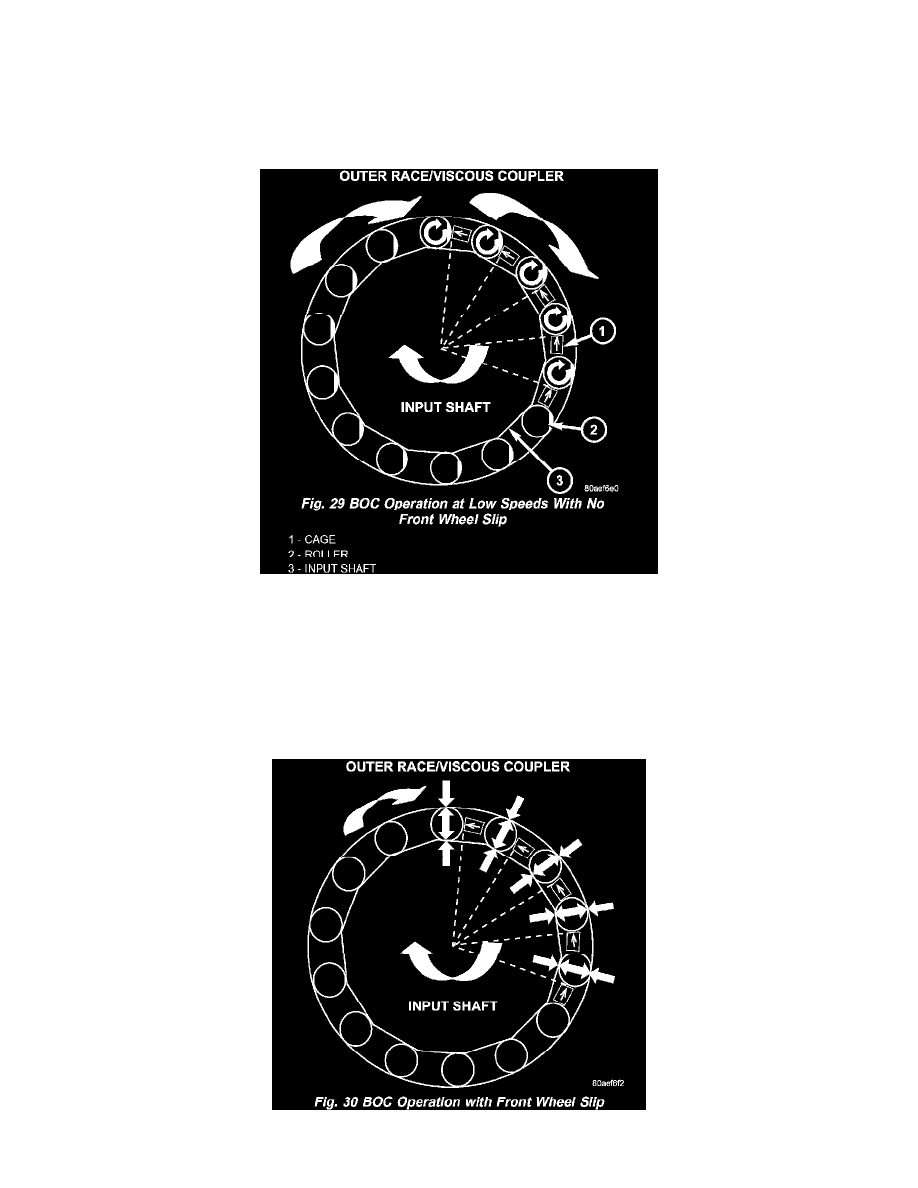Town & Country AWD V6-3.8L VIN L (2003)

clockwise (when viewed from the front) direction when the vehicle is moving forward, which indexes the BOC to the forward overrunning position.
When the vehicle is in reverse, the propeller shaft will rotate counter-clockwise and index the BOC to the reverse overrunning position.
The BOC acts as a mechanical stator. It is active (transmitting torque), or it is not active and in overrunning mode (not transmitting torque). This "all or
nothing" approach to torque transfer would cause a sudden application of all available power to the rear wheels, which is not desirable. Therefore it is
run in series with a viscous coupler to smooth, dampen, and limit the transmission of torque to the rear axle and to prevent a step style torque input to the
rear axle.
STEADY STATE, LOW TO MODERATE SPEED, NO FRONT WHEEL SLIP, FORWARD DIRECTION
During normal driving conditions, (no wheel slip), the inner shaft (front axle) and outer race (viscous coupler) are running at different speeds due to the
different gear ratios between the front and rear differentials. In this condition, the outer race is always spinning faster (overdriving between 5 - 32 rpm)
than the inner shaft. When the BOC (Fig. 29) is running under these conditions, at low vehicle speeds the drag shoes and the cage keep the rollers up on
the left side (forward side) of the inner shaft flats. This is what is known as "overrunning mode." Notice that when the clutch is in overrunning mode, the
rollers are spinning clockwise and with the outer race, thus no torque is being transferred.
NOTE: Low speed, forward and reverse operation is identical, just in opposite directions. (Fig. 29) shows forward direction in reverse the rollers are
on the other side of the flats due to a reversal of the cage force.
TRANSIENT CONDITION (BOC LOCKED), FRONT WHEEL SLIP, FORWARD DIRECTION
